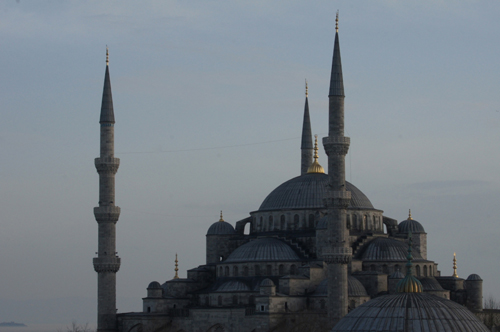
After 85 years the conversion of Hagia Sofia, from a museum back to a mosque, marks a turning point for modern Turkey.
The basilica of Hagia Sophia, built by the Byzantine Emperor Justinian 1, was inaugurated in 537 and apart from a few changes, especially to the dome, is largely intact.
The emperor had building material brought from all over the empire, including Hellenistic columns from the Temple of Artemis at Ephesus.
It held the title for being the world’s largest cathedral for nearly 1,000 years and was a marvel of architecture and engineering.
Following the Ottoman conquest of Constantinople (now Istanbul) in 1453, four minarets were added to the exterior.
As part of the secularising of Turkey by Mustafa Kemal Atatürk in 1935, the basilica was tuned into a museum.
This UNESCO World Heritage site is the most popular tourist destination in Istanbul. In 2014 over 3.5 million people visited the museum. Since then numbers had dropped off, due to terrorist concerns, but have steadily risen again with 3 million visitors in 2019.
It has been a wonderful example of how Turkey spans both the east and west, faiths and cultures.
This retrograde step is yet another move by Recep Tayyip Erdoğan and his conservative, popularist government to turn back the clock on history. It’s a rejection of the secularism that has made Turkey such a diverse and interesting country.
This entry was posted
on Sunday, July 12th, 2020 at 5:04 pm and is filed under Architecture, Comment, Grumbling, Photography, Travel.
You can follow any responses to this entry through the RSS 2.0 feed.
You can leave a response, or trackback from your own site.










Hagia Sophia – what’s good and bad about Turkey.
After 85 years the conversion of Hagia Sofia, from a museum back to a mosque, marks a turning point for modern Turkey.
The basilica of Hagia Sophia, built by the Byzantine Emperor Justinian 1, was inaugurated in 537 and apart from a few changes, especially to the dome, is largely intact.
The emperor had building material brought from all over the empire, including Hellenistic columns from the Temple of Artemis at Ephesus.
It held the title for being the world’s largest cathedral for nearly 1,000 years and was a marvel of architecture and engineering.
Following the Ottoman conquest of Constantinople (now Istanbul) in 1453, four minarets were added to the exterior.
As part of the secularising of Turkey by Mustafa Kemal Atatürk in 1935, the basilica was tuned into a museum.
This UNESCO World Heritage site is the most popular tourist destination in Istanbul. In 2014 over 3.5 million people visited the museum. Since then numbers had dropped off, due to terrorist concerns, but have steadily risen again with 3 million visitors in 2019.
It has been a wonderful example of how Turkey spans both the east and west, faiths and cultures.
This retrograde step is yet another move by Recep Tayyip Erdoğan and his conservative, popularist government to turn back the clock on history. It’s a rejection of the secularism that has made Turkey such a diverse and interesting country.
This entry was posted on Sunday, July 12th, 2020 at 5:04 pm and is filed under Architecture, Comment, Grumbling, Photography, Travel. You can follow any responses to this entry through the RSS 2.0 feed. You can leave a response, or trackback from your own site.